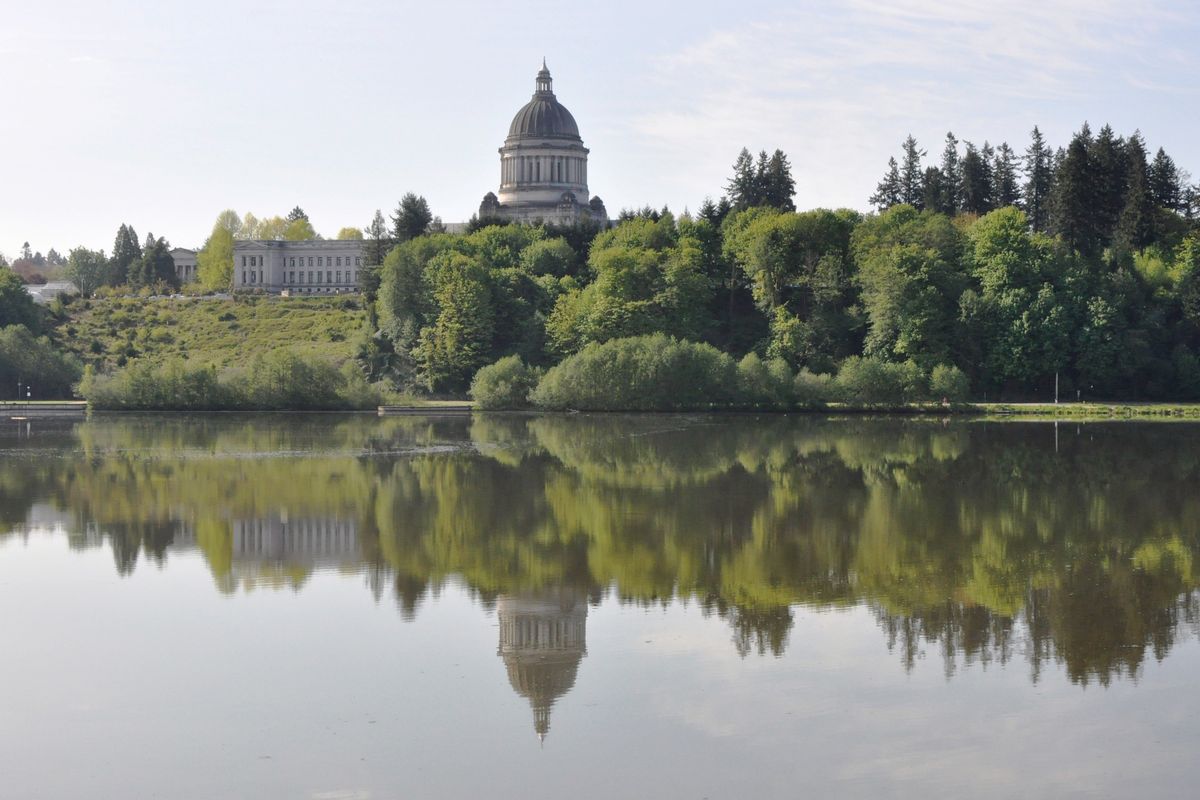We the People: Many states have had multiple capitals, but Washington’s has always been Olympia

Each week, The Spokesman-Review examines one question from the Naturalization Test immigrants must pass to become United States citizens.
Today’s question: What is the capital of your state?
The answer to this question obviously depends on where the prospective new citizen lives. It also could be a little tricky in most states like Washington, where the capital, Olympia, is not in the largest and/or best-known city.
In Washington, the capital city is not even in the top 20 in terms of population.
But when Olympia was selected in 1853 to be the capital of the newly formed Washington territory, it actually was one of the biggest settlements in the region.
The area north of the Columbia River had just been split off from Oregon in advance of that territory’s upcoming statehood. Newly appointed Washington Territorial Gov. Isaac Stevens, who had never set foot in the region, named Olympia the new territory’s capital because it was the only established port of entry with a federal Customs House on the Puget Sound, and the closest access to that body of water to people traveling overland from Portland and the Columbia River.
From Olympia, they could make their way north by water, which was often quicker than traveling by land. The settlement only had about 100 residents, but that was larger than Seattle or Tacoma.
Fun fact: At the time, Olympia also was the capital of what is now Idaho and western Montana, when land now in those states was part of the Washington territory. In 1863, the western part of the Washington territory was split off into the Idaho territory, with its capital in Lewiston. The Idaho territory’s capital was moved to Boise in 1865 when that territory was redrawn, and the capital for the new Montana territory, which had the land on both sides of the Continental Divide, was briefly in Bannack and Virginia City before landing in Helena.
At its first session in early 1854, the Washington territorial legislature, meeting above a local store, agreed to keep the capital in Olympia. A special wood-framed two-story capitol building was constructed in 1856 and served as the home of the Legislature for nearly 50 years.
There were efforts to move the capital to Vancouver in the 1860s – with allegations that Portland power brokers were trying to bring it under their influence – and the Legislature actually voted to make that move at one point. But the bill that was passed and signed didn’t have the proper enabling language, and the territorial Supreme Court eventually threw it out.
When Washington became a state in 1889, voters got the chance to choose a state capital, along with ratifying the newly drafted state constitution, the Secretary of State’s office explains on its website. They were given six choices: Olympia, Ellensburgh (which then had an “h”), North Yakima (which is now Yakima), Centralia, Pasco and Yakima City (which is now Union Gap). None of the choices got a majority.
The next year, voters got just three choices – Olympia, Ellensburgh and North Yakima – and more than two-thirds said to keep the capital where it was.
That meant Olympia escaped the fate of half the original state capitals in the country that were moved, often more than once, as their states’ populations grew. Of the 25 states that have moved their capitals, most are east of the Mississippi River, although no state capital has been moved since 1910.
Stevens had surveyed a route for a railroad that would have ended in Olympia, but the Northern Pacific instead chose Tacoma’s Commencement Bay as its western terminus, which boosted that city and thwarted Olympia’s growth. When gold was discovered in Alaska, would-be prospectors got their supplies further north in Seattle, which helped boost that city.
In an effort to keep the capital in 1889, Olympia residents raised $2,500 to help improve the wood-framed capitol building, which was never fancy and by then showing its age. By the turn of the century, the state wanted a grander seat of government and, in 1901, made a deal with Thurston County to buy its 10-year-old stone courthouse closer to the city center for a new capitol building, and tore down the original building.
State government quickly outgrew the former courthouse, and ten years later the Legislature agreed to the construction of a capitol campus near the site of the original capitol building, an area that overlooks the Puget Sound at the south end of Budd Inlet. The first building on the complex was the state Supreme Court’s Temple of Justice, finished in 1912. Because of financial constraints, the domed Legislative Building, which actually houses the offices of the governor, lieutenant governor, secretary of state and treasurer, as well as both chambers of the Legislature, wasn’t completed until 1928.
The courthouse turned capitol building still stands near downtown, and is home to the Office of the Superintendent of Public Instruction.
State government grew rapidly after World War II, and the campus eventually extended across Capitol Way, the city’s main street, with more buildings in the neighboring cities of Tumwater and Lacey, as well as buildings in every corner of the state.